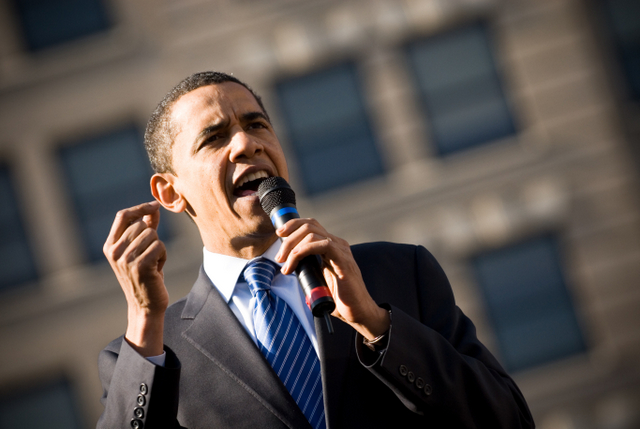The Obama Administration made a bold goal to install 300 MW of new solar panels on federally subsidized low- and moderate- income communities by 2020, and to offer loans and toolkits that further incentivize solar adoption.
Those in the solar industry know the the progress that’s been made the last five years alone in terms of installations, utility adoption, product innovation, project cost and just overall interest in the commercial and residential markets. But an official push from the administration for a more widespread push is further validation and maybe a sign of more to come.

© Mistydawnphoto | Dreamstime.com – Barack Obama 14 Photo
So, the keys of the initiative include:
Launching a National Community Solar Partnership to unlock access to solar for the nearly 50 percent of households and business that are renters or do not have adequate roof space to install solar systems, including issuing a guide to Support States In Developing Community Solar Programs;
The 300 MW goal in federally subsidized housing as well as technical assistance to make it easier to install solar, including clarifying how to use Federal funding;
Housing authorities, rural electric co-ops, power companies, and organizations in more than 20 states across the country are committing to put in place more than 260 solar energy projects, including projects to help low- and moderate- income communities save on their energy bills and further community solar; and
More than $520 million in independent commitments from philanthropic and impact investors, states and cities to advance community solar and scale up solar and energy efficiency for low- and moderate- income households.
The administration also announced the following executive actions and private sector commitments, including:
AmeriCorps funding to deploy solar and create jobs in underserved communities;
Expanding solar energy education and opportunities for job training; and
The solar industry is also setting its own, independent goal of becoming the most diverse sector of the U.S. energy industry, and a number of companies are announcing that they are taking steps to build a more inclusive solar workforce.
These new actions build on President Obama’s goal to train 75,000 workers to enter the solar industry by 2020 and the Solar Ready Vets program that will train transitioning military personnel for careers in the solar industry at 10 military bases.
More on the toolkit
To make it easier to use Section 108 Community Development Block Grant funds for solar energy systems, next month, HUD is releasing a renewable energy toolkit for use by Community Planning and Development (CPD) grantees. The toolkit will provide program compliance information, tools, and case study examples to help communities integrate renewable energy components such as solar photovoltaic, solar hot water, and cogeneration into the program in an efficient, cost-effective, and impactful way by using CPD funds. This action builds on an announcement last year during which, HUD’s CPD office affirmed that under current guidelines, Section 108 Community Development Block Grant funding can be used for clean energy and energy efficiency projects.
FHA is planning updates to its second-mortgage program that will make it easier for homeowners to borrow up to $25,000 for solar and energy-efficient improvements by cutting red tape and making improvements more affordable. Key features of the second mortgage program will include: 1) providing flexible underwriting to recognize the reduced cost of utilities for energy efficient homes; 2) allowing homeowners to control the disbursement of loan funds to the contractor; and 3) permitting contributions to lower out-of-pocket expenses and/or reduce borrower interest rates.
The U.S. Department of Energy (DOE) in collaboration with HUD, the U.S. Department of Agriculture (USDA), the U.S. Environmental Protection Agency (EPA), representatives from solar companies, NGOs, and state and community leaders are launching a National Community Solar Partnership to unlock access to solar for the nearly 50 percent of households and business that are renters or do not have adequate roof space to install solar systems. The partnership will leverage the interest in the public and private sector to expand access to community solar, in particular, for low- and moderate- income communities, while utilizing the technical expertise of DOE and the National Laboratories.
— Solar Builder magazine
[source: http://solarbuildermag.com/news/obama-makes-solar-energy-for-low-income-housing-a-priority/]

Leave a Reply
You must be logged in to post a comment.